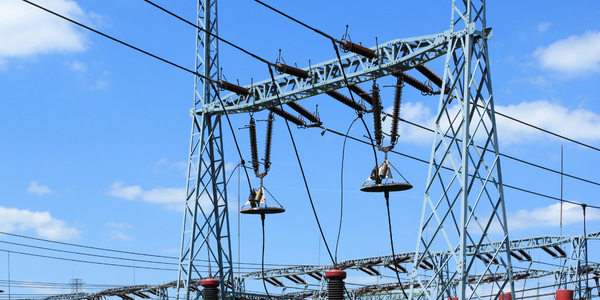Customer Company Size
Large Corporate
Region
- Asia
- Pacific
Country
- Australia
- Hong Kong
- Malaysia
- Philippines
- Singapore
Product
- Ingres Support Appliance
- Infor Enterprise Resource Planning (ERP) solution ‘MK’
Tech Stack
- Ingres Database
- Nagios toolset
Implementation Scale
- Enterprise-wide Deployment
Impact Metrics
- Cost Savings
- Productivity Improvements
Technology Category
- Application Infrastructure & Middleware - Data Exchange & Integration
Applicable Industries
- Electrical Grids
Applicable Functions
- Discrete Manufacturing
- Maintenance
Use Cases
- Predictive Maintenance
- Remote Asset Management
Services
- System Integration
- Testing & Certification
About The Customer
Emerson Network Power is a global leader in supplying business-critical power solutions. The company was in the process of centralizing their IT helpdesk in Manila, with the goal of seamlessly integrating the Australian operations with Singapore, Malaysia, and Hong Kong. Emerson used the Infor Enterprise Resource Planning (ERP) solution ‘MK’ as the central hub for information, distribution, and reporting. MK was built on Ingres Database and was integral to the daily operations of Emerson. The cost of downtime per business day was estimated at $1 million AUD, making it essential that a 24x7 disaster recovery resource was available to respond to any situation in a timely manner. Additional local support would be required to properly manage IT networks, systems, and databases for Australia. Due to the consolidating nature of the project, interoperability issues would become visible, and Emerson’s handling process would need continual development and improvement.
The Challenge
Emerson Network Power, a global leader in supplying business-critical power solutions, was in the process of centralizing their IT helpdesk in Manila. The goal was to seamlessly integrate the Australian operations with Singapore, Malaysia, and Hong Kong. Emerson used the Infor Enterprise Resource Planning (ERP) solution ‘MK’ as the central hub for information, distribution, and reporting. MK was built on Ingres Database and was integral to the daily operations of Emerson. The cost of downtime per business day was estimated at $1 million AUD. It was essential that a 24x7 disaster recovery resource was available to respond to any situation in a timely manner. Additional local support would be required to properly manage IT networks, systems, and databases for Australia. Due to the consolidating nature of the project, interoperability issues would become visible, and Emerson’s handling process would need continual development and improvement. To take all this work in-house would require hiring a minimum of three full-time employees which was considered an unworkable timeframe. Emerson needed a partner that could provide both the skill sets and knowledge base to service the Ingres database underlying the MK application, and provide a 24x7 support service with the highest level of support and continuity.
The Solution
Emerson commissioned Ingres to build a solution based on the best-practice ITIL/ITSM methodology. This met Emerson’s stringent specifications for disaster recovery services, and provided day-to-day support and reporting. Initial development focused on the Ingres 24x7 disaster recovery box in Emerson’s regional back-office. This server now creates a replication of the transactions processed through the MK application on a daily basis, with hourly journals created throughout the day. Ingres provided Remote Database Administration (RDBA), which is a customized service for Ingres clients that need high level administration skills, but do not want to take on additional internal resources. Ingres RDBA allowed Emerson to have access to a constant headcount of highly skilled technicians familiar with their environment, and who could respond quickly to any problem. The Ingres Support Appliance (ISA), an automated and proactive monitoring service based on the Nagios toolset, was used to quickly identify and resolve any issues. ISA identifies when loads on the database and MK applications are causing problems, notifying both the Emerson Help Desk and the Ingres team.
Operational Impact
Quantitative Benefit

Case Study missing?
Start adding your own!
Register with your work email and create a new case study profile for your business.
Related Case Studies.

Case Study
Hydro One Leads the Way In Smart Meter Development
In 2010, Ontario’s energy board mandated that time-of-use (TOU) pricing for consumers be available for all consumers on a regulated price plan. To meet this requirement, Hydro One needed to quickly deploy a smart meter and intelligent communications network solution to meet the provincial government’s requirement at a low cost. The network needed to cover Hydro One’s expansive service territory, which has a land mass twice the size of Texas, and its customers live in a mix of urban, rural, and remote areas, some places only accessible by air, rail, boat or snowmobile. Most importantly, the network needed to enable future enterprise-wide business efficiencies, modernization of distribution infrastructure and enhanced customer service. To meet these needs, Hydro One conceptualized an end-to-end solution leveraging open standards and Internet Protocols (IP) at all communication levels. The utility drew upon industry leaders like Trilliant to realize this vision.

Case Study
Selling more with Whirlpool
Whirlpool wanted to add connectivity to appliances and transform the company's relationship with customers. Traditionally, Whirlpool interaction with customers was limited to purchases made once every ten years. Connected washer and dryers provide exciting new features like remote management of start times and inter-machine communication.

Case Study
SAS® Analytics for IoT: Smart Grid
Companies face falling revenues, rising infrastructure costs, and increasing risk of outages caused by inconsistent energy production from renewable sources. Less money is coming in as more people and organizations take steps to curb their energy use. Utilities are paying more to maintain and build infrastructure due to increasing complexity, resulting from the rising number of intermittent and variable renewable energy sources connected in the distribution grid.

Case Study
Enel Secures Italian Power Generation Network
Electric energy operators around the world are working to increase the reliability and cyber resiliency of their systems. This includes Enel, a global power company that manages and monitors the Italian power grid. This grid:• Serves 31 million customers• Has a net installed energy capacity exceeding 31 gigawatts• Includes more than 500 power generation plants,including hydroelectric, thermoelectric, and wind• Is managed and monitored by Enel 24/7/365• Is operated by Terna, the Italian Transmission System Operator (TSO)Enel is responsible for the availability of the grid’s underlying ICS and industrial network. It also manages Regional Control Centers and Interconnection Centers which connect with the TSO. The TSO manages the flow of energy to the grid plus controls and remotely regulates the power generation of power plants, increasing and decreasing power production as required. The complex system of interaction and cooperation between Enel and the TSO has strong security implications as well as operational and business challenges.

Case Study
IoT based Energy Quality Availability Monitoring Solution
There were several challenges faced:Since this data would be in the public domain, accuracy and authenticity of this data were of paramount importance. It should be able to withstand scrutiny.It is challenging to build an appliance that can withstand a wide range of voltage fluctuations from as low at 90v to as high as 320v. Since the device would be installed in remote locations, its resilience was of paramount importance.The device would have to deal with poor network coverage and have the ability to store and re-transmit data if networks were not available, which is often the case in rural India. The device could store up to 30 days of data.The platform that deals with the data should be readily available and highly reliable and never lose a packet of data.

Case Study
Hydro Utility Builds Foundation for Powerful Efficiencies and Protection
As the main British Columbia electric distributor, BC Hydro provides 1.9 million residential, commercial, and industrial customers with energy. The hydro utility transformed to a digital business with Cisco connected networking, security, and smart grid solutions. • Deliver reliable, high-quality services • Enable remote automation and monitoring • Connect applications over a common networking infrastructure







